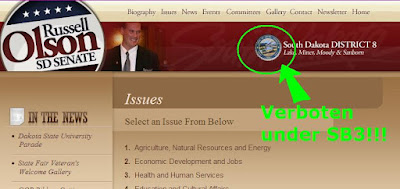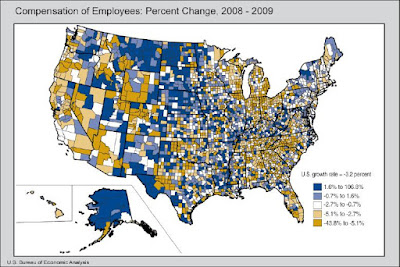I may complain about the paucity of local media, but Madison Daily Leader publisher Jon Hunter contends South Dakota's newspaper market has more players than most places.
In his Monday editorial, our man Hunter congratulates the
Garretson Gazette and the
Native Sun News on ascending to the noble ranks of "legal newspapers" (i.e., getting to publish legal notices from local government entitites, the convenient racket that the newspaper association uses to protect its market share from innovators who would save tax dollars by publishing meeting minutes and new ordinances online).
In the process, Hunter notes that "
There are now 119 weekly and 11 daily newspapers in South Dakota, the most per capita of any state in the nation."
Given our new official population of
814,000, that's one daily for every 74,000 South Dakotans. Turn the number another way, that's 13.5 daily newspapers per million population. According to data from the
World Association of Newspapers and News Publishers, that gives us press coverage almost as good as Switzerland (which has 14.0 dailies per million). Of the 25 countries with higher daily-per-million ratings, most are pa-dinkally places like San Marino, Liechtenstein, Aruba, and the Northern Mariana Islands. Our Norsky forebears also outnews us (19.3 dailies per million), but South Dakota beats Sweden (11.0), Denmark (7.2), and the United States as a whole (6.0 dailies per million, or one paper per 167,000 people).
Think of South Dakota as a single community that just happens to be spread out across
77,000 square miles: we have 11 daily newspapers serving a population about the
same size as Indianapolis or San Francisco. Yahoo's directory pops up fifteen papers for
San Francisco. Mondo Times lists
four Indianapolis papers.
But does quantity mean quality? That depends on how you define
quality in newspapers. If we're talking reach and impact, only two of those 130 publications, the
Rapid City Journal and
that Sioux Falls paper approach statewide status (though I get the feeling from the Web that the
Mitchell Daily Republic is trying). Most of the rest do what they do reasonably well, covering their local events, but rarely reaching beyond their county borders.
If we're talking breadth of viewpoints, well, we're eating mostly white bread. Most of the newspapers Jon Hunter counts are of the same genre: community booster rags with lots of pics from the kids' basketball games and the local Tour of Gardens, spiced with the occasional contrarian letter to the editor. (Monday's
Madison Daily Leader letters: advice from the Car Care Council in Maryland on keeping our cars ready for winter, and tips from a local nursing home manager on good Christmas gifts for old folks.) Most South Dakota newspapers operate in tiny media monopolies with no alternative voices on paper to challenge them. The closest thing to a regular alternative press may be the college weeklies (and note: after
108 years in print, DSU's student newspaper,
The Trojan Times, is
going all digital).
Compare that to San Francisco, where the mainstream
San Francisco Chronicle dominates, but where
dozens of alternative newspapers coexist and serve the same community with different ethnic and political viewpoints.
And as we love to point out, of those 11 South Dakota dailies, only the
Madison Daily Leader is independently and locally owned. Local control matters, especially when it comes to news. When the money decisions are made elsewhere, you end up with the biggest papers in the state not maintaining bureaus in Pierre to cover state government.
Having lots of newspapers is great. South Dakota's newspapers tell stories that no one else is going to cover. But the lack of local ownership, diversity of voices, and breadth of coverage leave room for improvement. Keep printing, Jon!






 This blog printed on 100% recycled electrons.
This blog printed on 100% recycled electrons.








